 > Automatic part annotation
> Automatic part annotation 
Project: HiCAD 3-D
3-D Dimensioning + Text > Text > Leader  > Automatic part annotation
> Automatic part annotation 
HiCAD offers the option to annotate part lists, i.e. a selection of several parts, in one step. To define a part list, click the parts you require while holding down the CTRL key - either in the drawing or in the ICN.
You can freely select the template file with the annotation settings and use various filter settings. For instance, you can specify whether
When you call the function, the following dialogue window will be displayed:
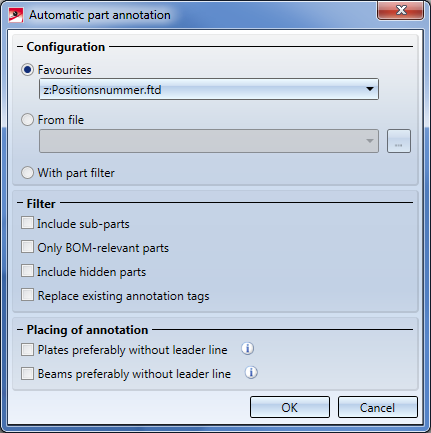
Configuration
The settings can be found in the Configuration Editor at Drawing > Annotations > Automatic annotations > Favourites. There, you can also preset the template file for automatic annotation. It will then be displayed as the default setting in the Preferred selection list of the Automatic part annotation dialogue window.
 icon to select the desired file.
icon to select the desired file.
Filter
In this area you can set various filters, enabling you to exclude particular parts of the selection from editing.
The following filter options are available:
An example:
The image below show the detail of a support structure. Let's take a look at the assembly with the item number 1.
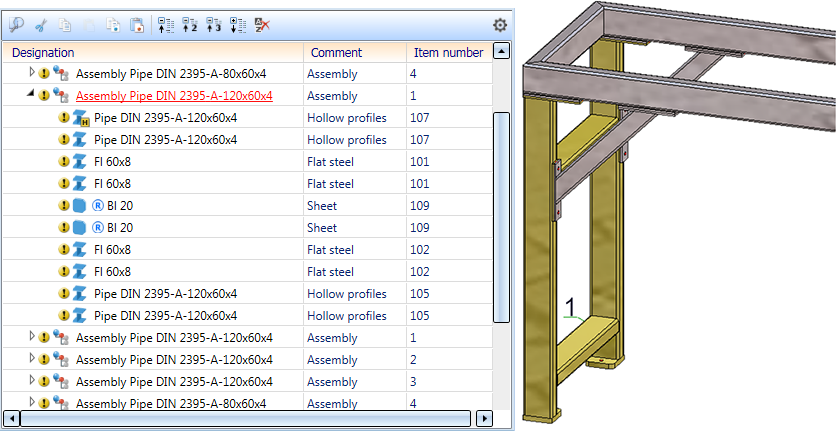
The automatic part annotation will then produce the following result in the front view:
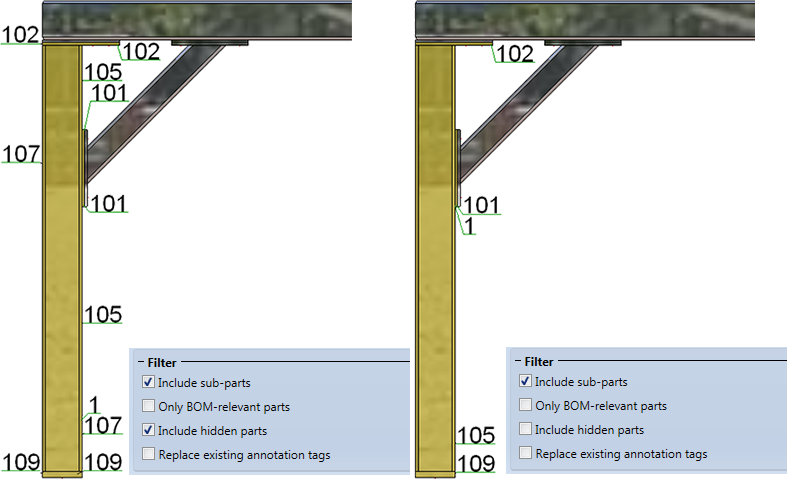
Placing of annotation
Here you can determine whether the annotations for beams and plates are to be applied with or without leader line.
If this checkbox is active, HiCAD proceeds as follows: If there is enough space on the part, the annotation for the plate will be placed directly on the part. If there is not enough space, the annotation will be created with a leader line.
If this checkbox is active, HiCAD proceeds as follows: If there is enough space in the vicinity of the part, the annotation will be placed along the beam as shown below. If there is not enough space, the annotation will be created with a leader line.
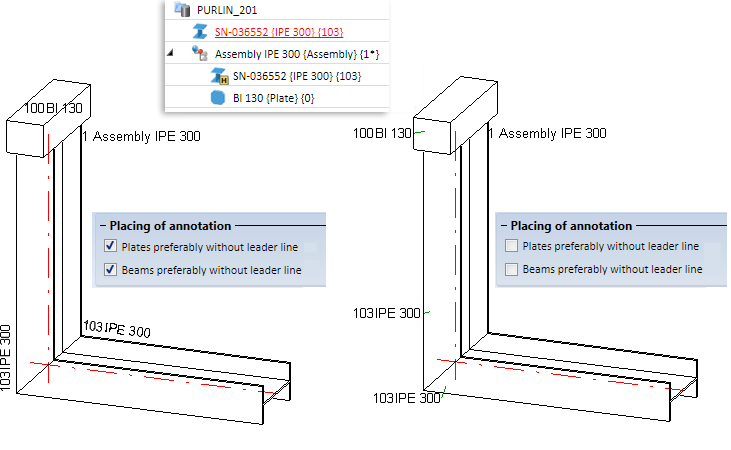
The last specified settings that have been confirmed with OK will be the default settings when the function is called again.
If the With part filter option has been activated in the Automatic part annotation dialogue window, the filters defined in the Configuration Editor at Drawing > Annotations > Automatic annotation are to be used for part annotations.

When you click on the  symbol, the current assignment is displayed.
symbol, the current assignment is displayed.
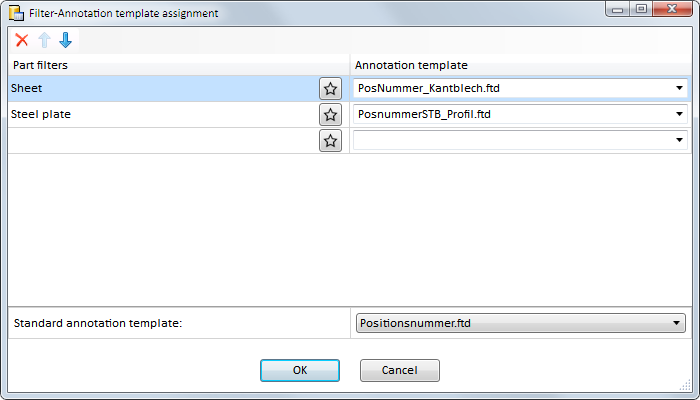
According to the ISD default setting, different annotation templates are used for sheets (Sheet Metal) and steel plates (Steel Engineering), namely, the templates that are offered in the table. For all other parts, the annotation template at the bottom of the window will be used.
Symbols and buttons:
|
|
Deletes the marked assignments. You can also right-click on a table row and choose Delete. |
|
|
Moves the marked assignment up or down. The assignments are dealt with from top to bottom for the automatic annotation. Depending on which Favourites have been chosen here, the order will also affect the annotation (see Example 2) |
|
|
Selection of a Favourite, i.e. of the objects to which you want to assign a different annotation template instead of the standard annotation template. Selected can be the same Favourites as the ones for the Part filter function on the transparent toolbar - both the filters pre-defined by the ISD and the filters that you created yourself, e.g.:
|
|
OK |
Applies the current assignment table and closes the dialogue window. |
|
Cancel |
Closes the dialogue window without applying the changed assignments. |
Example 1: Defining a new assignment for I-beams
Let us assume that a special annotation template is to be used for I-beams.
Proceed as follows:
 symbol.
symbol.
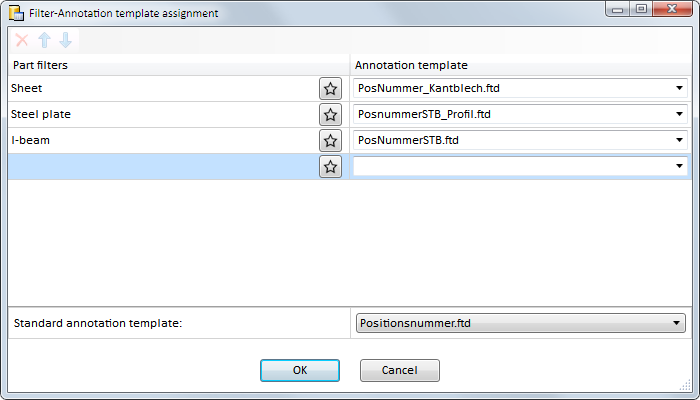
Example 2: Create a new part filter / Determine a new assignment for this filter / Effcts on the order
In this example we will use a part filter that we created ourselves. First, call the Part filter function in the transparent toolbar.
Activate the Manual filter tab in the dialogue window, choose Change > Part > Steel Engineering > Beam, click on the  symbol, choose Save favourite and save the filter to Indiv. part, Steel Engineering with the name Alle beams.
symbol, choose Save favourite and save the filter to Indiv. part, Steel Engineering with the name Alle beams.
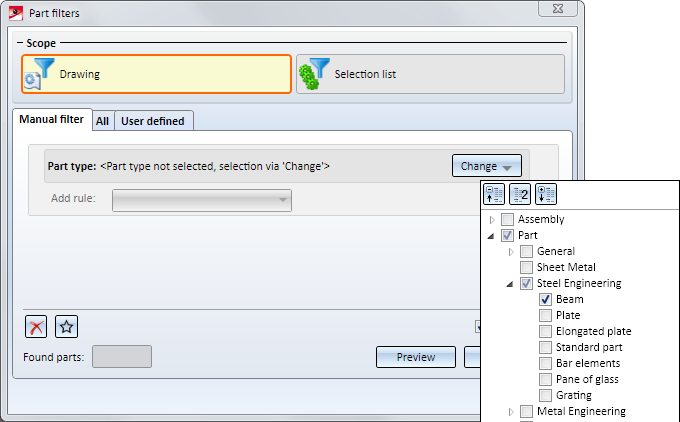
The filter is now also available in the Configuration Editor, so that you can now define an own assignment for this filter, too:
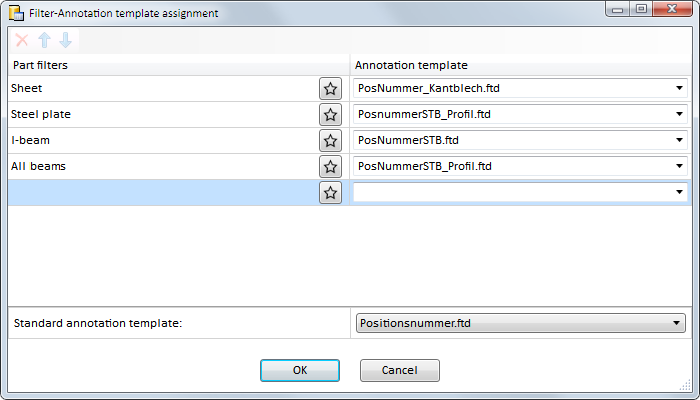
Here, the order of the entries affects the annotation. In the assignment shown above, first the sheets, then the steel plates, then the I-beams, and then all other beams would be annotated.
Now we swap the rows I-beams and All beams.
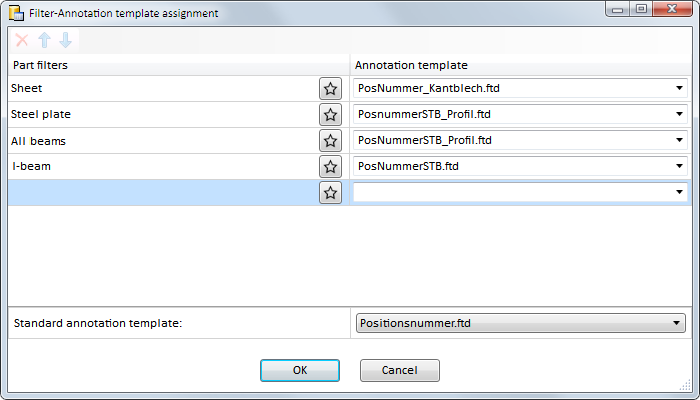
Now, all beams will be annotated after the sheets and the steel plates, i.e. also the I-beams. This means that the assignment for the I-beams is not evaluated any more.

Texts and Annotations (3-D) • Part Annotations (3-D) • Change Annotation Settings (3-D)
|
© Copyright 1994-2019, ISD Software und Systeme GmbH |